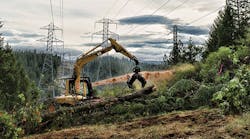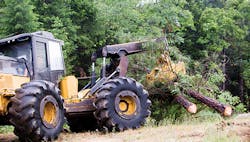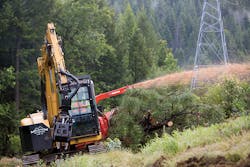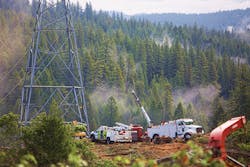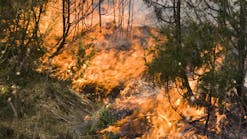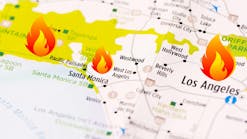Nearly 20 years ago, a migrant farm worker was killed when he made contact with a power line in Southern California. Instead of grabbing an avocado tree with his aluminum pole, he instead hit an energized line hidden by overgrown vegetation. In turn, the California Public Utilities Commission enacted regulations requiring electric utilities to abide by minimum clearance standards around distribution power lines.
As a result, California utilities must maintain a minimum separation of 18 inches of vegetation away from distribution power lines. To meet this regulatory requirement, Sacramento Municipal Utility District (SMUD) hired a professional manager to run its vegetation management program and conducted a comprehensive assessment within its service territory.
Following a Plan
As the sixth largest municipal utility in the United States, SMUD manages more than 500 miles of transmission right-of-way (ROW) corridors. In addition, SMUD’s vegetation management team performs vegetation inspection and planning and oversees the maintenance of more than 200,000 trees in its 900-sq-mile service area. The team also maintains the easements and ROWs in or adjacent to SMUD’s generation, distribution and transmission infrastructure. To allow for the reliable, safe delivery of electricity, SMUD must abide by a regular schedule to clear vegetation away from power lines, poles, substations and other facilities.
For the last 15 years, SMUD has followed a three-year cycle to get its system on a manageable level. Before the utility was able to move to this proactive program, however, it hired an outside contractor to perform a vegetation workload study on its system. Then, based on the population of the trees and their growth rate, the utility could make decisions on how to structure the vegetation management program.
Today, every area in the district with overhead facilities is visited at least every three years. Because some trees can experience more growth than expected, SMUD also performs a mid-cycle patrol at the 18-month mark. That way, the utility can ensure all the trees and lines are in compliance. If there is the potential for a significant outage or safety concern, or if someone could get injured or killed, they make sure they take care of the issue immediately.
Every three years, vegetation management planners go out in front of the crews to inspect each and every location. SMUD has broken the service territory into geographical areas and subareas, and the planners determine what work needs to be done, make contact with the customers and then release a work packages to the contractors to do the work.
Clearing ROWs
By regularly maintaining its ROWs, SMUD is able to improve power reliability and also minimize damage from wildfires. Case in point: back in September 2014, an arsonist set a fire in the Sierra that impacted 20 miles of SMUD’s transmission lines that originate from the Upper American River Project hydroelectric facility. Because SMUD and its contractors had completed previous work, they sustained minimal damage. If SMUD had not properly maintained the ROW, however, the wildfire could damage the conductor to the point where it would have had to be replaced.
Just beyond where the fire had burned, however, a section of the ROW was overgrown. In this area, homeowners maintain small acreage parcels and enjoy living in a wooded, natural environment. As such, they were resistant to SMUD performing any significant ROW work as far as removing vegetation.
After the wildfires, however, these customers reached out to SMUD and other local utilities asking them to clean up the ROW. SMUD took this opportunity to perform the much-needed vegetation management work.
Through a joint project, SMUD was able to partner with Pacific Gas & Electric, which provided many benefits because of the economies of scale. With this approach, the two utilities could be consistent with how they were managing the ROW corridor and dealing with the landowners. Rather than dealing with two separate companies, the landowners dealt with just one person who was responsible for coordinating the work and the schedules, which was more convenient for the customers.
Demonstrating Environmental Stewardship
To recognize SMUD for its ROW work, the Right of Way Stewardship Council (ROWSC) approved SMUD as one of seven founding accredited utilities. To achieve this designation, SMUD demonstrated excellence in terms of maintaining easements and ROW as well as environmental stewardship.
The ROWSC promotes application of integrated vegetation management and best management practices to utility vegetation managers. The accreditation program establishes standards for responsible ROW vegetation management along corridors. To become accredited, SMUD formerly applied for the program, and is complying with standards.
Since SMUD has maintained a regular cycle for its vegetation management program, it has only experienced 19 preventable outages on its entire system. Before the formalized program was up and running, SMUD’s linemen were constantly reporting problems with vegetation, and the team had to constantly take care of hot spots. Today, the issues are virtually non-existent, and the linemen can focus on their daily work rather than worrying about overgrown vegetation or danger trees that can impact power reliability.
Steve Hallmark is the vegetation management manager for the Sacramento Municipal Utility District. He has been with SMUD for 18 years, and he previously worked for Puget Sound Energy and Gulf States Utilities.
Right of Way Stewardship Council Founding Accredited Utilities
- AltaLink
- Arizona Public Service
- Bonneville Power Administration
- New York Power Authority
- Pacific Gas and Electric Co.
- Sacramento Municipal Utility District
- Vermont Electric Co.
Editor’s note: For more information about the Right of Way Stewardship Council, visit rowstewardship.org.
